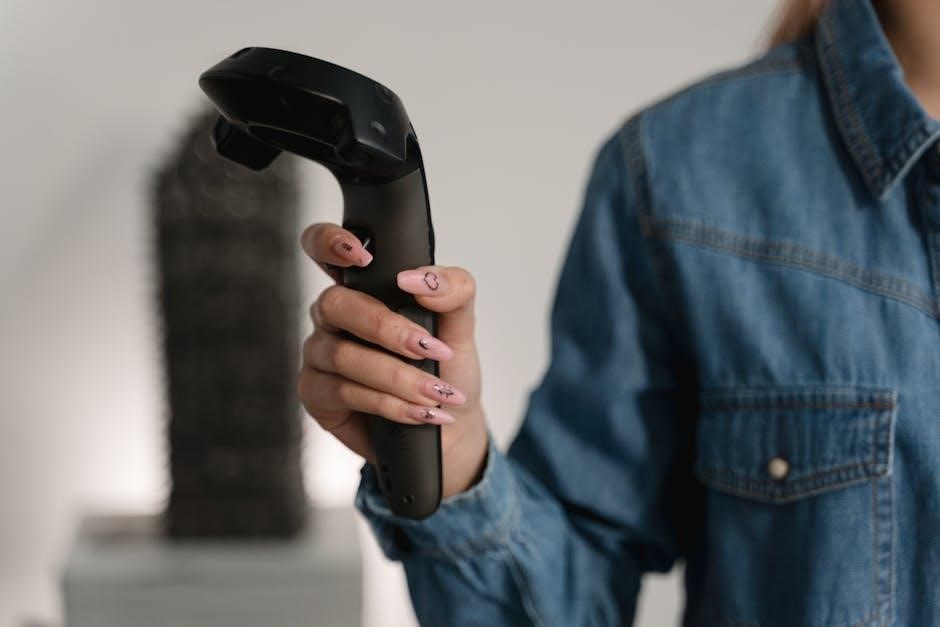how to reset electronic throttle control manually
Manually resetting the electronic throttle control involves a few straightforward steps. Start with the ignition in the ON position without starting the engine. Press and hold the accelerator pedal fully for 20 seconds. The check engine light may flash, indicating the reset process. Release the pedal, turn the ignition off, and restart the engine to complete the calibration. Allowing the vehicle to idle for a few minutes can help ensure proper system recalibration.
The Electronic Throttle Control (ETC) system is a critical component in modern vehicles, responsible for regulating engine performance by managing the throttle valve’s opening and closing. This system replaces the traditional mechanical throttle cable with electronic sensors and actuators, providing smoother acceleration, improved fuel efficiency, and better overall engine control. Over time, however, the ETC system may develop issues such as a stuck throttle, poor idle, or reduced engine performance, often triggered by component replacements or system malfunctions.

Resetting the Electronic Throttle Control manually is a common procedure used to restore proper system function after repairs or replacements, such as installing a new throttle body or accelerator pedal. This process helps the vehicle’s computer (ECU) recalibrate its settings to ensure accurate communication between sensors and actuators. While some modern vehicles require specialized tools like an OBD2 scanner for resetting, many systems can be reset manually using straightforward steps.

Understanding how to reset the ETC manually is essential for DIY enthusiasts and mechanics alike, as it can save time and money by avoiding costly trips to a dealership or repair shop. This guide provides a comprehensive overview of the manual reset process, ensuring drivers can safely and effectively restore their vehicle’s throttle system to optimal performance.
Understanding the Electronic Throttle Control System
The Electronic Throttle Control (ETC) system is a sophisticated mechanism that regulates engine performance by electronically managing the throttle valve. Unlike older vehicles that use a mechanical throttle cable, modern cars rely on sensors and actuators to control airflow into the engine. The system consists of key components, including the throttle position sensor, accelerator pedal position sensor, and throttle actuator. These parts work together to ensure precise control over the engine’s power delivery.
The ETC system operates by monitoring the driver’s input through the accelerator pedal. The accelerator pedal position sensor detects how far the pedal is pressed and sends this information to the Engine Control Unit (ECU). The ECU then calculates the ideal throttle valve opening based on factors like engine speed, load, and temperature. This data is transmitted to the throttle actuator, which adjusts the throttle valve accordingly. This seamless communication ensures smooth acceleration, efficient fuel consumption, and optimal engine performance.
Understanding how the ETC system functions is crucial for diagnosing and addressing issues. If the system malfunctions, symptoms such as erratic idle, reduced power, or a “check engine” light may appear. Resetting the system manually or using specialized tools like an OBD2 scanner can often resolve these problems. Familiarity with the ETC components and their interactions helps drivers and mechanics identify the root cause of issues and perform effective repairs or recalibrations.
Tools and Materials Needed
To manually reset the electronic throttle control system, you will need a few essential tools and materials. These include:
- An OBD2 scanner: This device is crucial for clearing fault codes and resetting the system. It communicates with the vehicle’s ECU to erase stored errors and recalibrate the throttle system.
- Ignition key: You will need the vehicle’s ignition key to power the electrical systems without starting the engine.
- Accelerator pedal: The pedal itself is integral to the reset procedure, as it must be pressed and released in a specific sequence.
- Torque wrench or screwdrivers: In some cases, you may need to access the throttle body for cleaning or adjustments, requiring basic tools.
- Protective gloves and eyewear: These are recommended for safety when working with electrical and mechanical components.
Having these tools and materials ready ensures a smooth and efficient reset process. The OBD2 scanner is particularly important, as it allows you to monitor and clear any trouble codes that may interfere with the reset procedure. Always refer to your vehicle’s specific manual for any additional tools or precautions recommended by the manufacturer. Proper preparation is key to successfully resetting the electronic throttle control system and restoring optimal engine performance.
Resetting the electronic throttle control manually involves a precise sequence of actions to recalibrate the system. Start by ensuring the vehicle is on a level surface and in park (automatic) or neutral (manual). Turn the ignition key to the ON position but do not start the engine. Press and hold the accelerator pedal all the way down for 20 seconds. This step helps the system recognize the pedal’s full range of motion.
- Release the accelerator pedal slowly and wait for 10 seconds. This allows the ECU to process the new data.
- Turn the ignition key to the OFF position and wait another 10 seconds.
- Restart the engine and allow it to idle for 1-2 minutes. This step ensures the throttle system recalibrates properly.
- Test the throttle response by gently pressing the accelerator pedal while monitoring for smooth acceleration.
This procedure resets the throttle control system by allowing the ECU to relearn the pedal’s position and the throttle valve’s operation. If issues persist, an OBD2 scanner may be required to clear any stored fault codes. Ensure no additional loads are placed on the engine during the reset process for accurate calibration.
Using an OBD2 Scanner for Resetting

Step-by-Step Manual Reset Procedure

Resetting the electronic throttle control manually is a systematic process that helps recalibrate the system after maintenance or repairs. Here’s how to do it:
- Prepare the Vehicle: Ensure the vehicle is on a level surface and in park (automatic) or neutral (manual). The engine should be cold or at operating temperature, depending on the manufacturer’s instructions.
- Ignition Setup: Turn the ignition key to the “ON” position but do not start the engine. This powers up the electronic systems without engaging the ignition.
- Accelerator Pedal Procedure:
- Press the accelerator pedal all the way down to the floor.
- Hold the pedal in the fully pressed position for exactly 20 seconds. This allows the ECU to recognize the pedal’s full range of motion.
- Slowly release the pedal and wait for 10 seconds. This pause lets the ECU process the new data.
- Ignition Cycle:
- Turn the ignition key to the “OFF” position and wait for another 10 seconds.
- Restart the engine and allow it to idle for 1 to 2 minutes. This step ensures the throttle system recalibrates properly.
- Test the Throttle Response:
- Gently press the accelerator pedal while monitoring for smooth acceleration. Ensure there are no jerks or uneven responses.
- Take the vehicle for a test drive to confirm that the throttle response is consistent and free of issues.
Important Considerations:
- Ensure no additional loads are placed on the engine during the reset process for accurate calibration.
- If the reset procedure does not resolve the issue, consider using an OBD2 scanner to clear any fault codes or consult a professional mechanic.
By following these steps, you can manually reset the electronic throttle control, allowing the ECU to relearn the throttle pedal’s range and the throttle valve’s closed position. If unsure, always refer to the vehicle’s repair manual or seek professional assistance to avoid potential damage or safety hazards.
Accelerator Pedal Release Position Learning
Accelerator pedal release position learning is a critical step in resetting the electronic throttle control system. This process ensures the engine control unit (ECU) accurately recognizes the pedal’s “zero” or fully released position, which is essential for proper throttle response and engine performance.

- Ignition Setup: Turn the ignition key to the “ON” position but do not start the engine. This activates the vehicle’s electrical systems, allowing the ECU to communicate with the throttle control components.
- Pedal Press and Release:
- Press the accelerator pedal all the way down to the floor. Hold it in this position for exactly 10 seconds to allow the ECU to recognize the full range of motion.
- Slowly release the pedal until it returns to its fully released position. This step helps the system calibrate the pedal’s “zero” point.
- Ignition Cycle:
- Turn the ignition key to the “OFF” position and wait for 10 seconds; This allows the ECU to store the new calibration data.
- Restart the engine and allow it to idle for 1 to 2 minutes. During this time, the ECU will finalize the pedal release position learning process.
- Verification:
- Gently press and release the accelerator pedal several times to ensure smooth and consistent throttle response.
- Take the vehicle for a test drive to confirm that the pedal operates smoothly and without hesitation.
Important Note: If the vehicle’s ECU does not recognize the new calibration, the process may need to be repeated or performed using an OBD2 scanner. Always refer to the vehicle’s specific repair manual for precise instructions, as procedures may vary by manufacturer.
Throttle Valve Closed Position Learning
Throttle valve closed position learning is a procedure that ensures the electronic throttle control system accurately recognizes the fully closed position of the throttle valve. This calibration is essential for maintaining proper engine idle and performance.

- Ignition Setup: Start by turning the ignition key to the “ON” position without starting the engine. This powers up the engine control unit (ECU) and allows it to communicate with the throttle system.
- Accelerator Pedal Position: Ensure the accelerator pedal is fully released and remains in this position throughout the procedure. This step is crucial for the ECU to accurately learn the throttle valve’s closed position.
- Throttle Valve Calibration:
- Press and hold the brake pedal firmly to ensure the vehicle does not move during the procedure.
- Allow the engine to idle for 30 seconds to 1 minute. During this time, the ECU will monitor the throttle valve’s position and store the closed position data.

- Ignition Cycle:
- Turn the ignition key to the “OFF” position and wait for 10 seconds. This allows the ECU to save the new calibration data.
- Restart the engine and allow it to idle for another 2 minutes. This step ensures the ECU finalizes the throttle valve closed position learning process.
- Verification:
- Check the idle speed to ensure it is stable and within the manufacturer’s specifications.
- Test drive the vehicle to confirm smooth acceleration and proper throttle response.
Important Note: If issues persist after performing this procedure, it may be necessary to use an OBD2 scanner to clear any stored fault codes or perform additional calibrations. Always consult the vehicle’s repair manual for specific instructions, as procedures may vary by manufacturer.
Post-Reset Testing and Verification
After manually resetting the electronic throttle control, it is essential to perform thorough testing to ensure the system is functioning correctly. Start by turning the ignition to the “ON” position and observing the dashboard lights. If the check engine light (CEL) was previously illuminated, it should now be off. If the CEL remains on, additional troubleshooting may be required.
- Idle Test: Start the engine and allow it to idle for 2-3 minutes. Listen for any unusual noises or vibrations. The idle should be smooth and steady, indicating proper throttle calibration.
- Throttle Response Test: Gradually press the accelerator pedal to ensure smooth and responsive acceleration; If the vehicle hesitates or jerks, the throttle calibration may not have been successful.
- Test Drive: Take the vehicle for a short drive, paying attention to how it accelerates and decelerates. Check for any unexpected behavior, such as sudden surges or lack of power.
- OBD2 Scanner Check: Use an OBD2 scanner to verify that no trouble codes remain after the reset. Clear any codes if necessary and test drive the vehicle again to ensure the issue is resolved.
Important Note: If the vehicle continues to exhibit issues after the reset, it may indicate a more serious problem with the throttle system or related components. In such cases, professional diagnosis and repair may be necessary.
Troubleshooting Common Issues After Reset
After manually resetting the electronic throttle control, some issues may persist or arise. The most common problems include the check engine light (CEL) remaining illuminated, poor idle quality, or erratic throttle response. These issues often indicate incomplete calibration or underlying faults in the system.
- CEL Stays On: If the CEL remains lit after the reset, use an OBD2 scanner to retrieve trouble codes. Codes such as P2111 (Throttle Control System) or P2176 (Throttle Actuator Control System) may indicate a faulty throttle body or sensor.
- Poor Idle Quality: If the engine idles rough or stalls, ensure the throttle body is clean and free from debris. A clogged throttle body can prevent proper calibration. Inspect the throttle position sensor (TPS) and accelerator pedal position sensor (APP) for correct operation.
- Erratic Throttle Response: If the vehicle hesitates or surges during acceleration, the throttle valve closed position learning may not have been completed successfully. Repeat the throttle valve calibration process to ensure proper synchronization.
- Reset Not Holding: If the reset procedure fails to hold, check for loose or corroded connections in the throttle control system. Ensure the battery is fully charged and connections are secure before retrying the reset.
Solution: If issues persist, clear the fault codes using an OBD2 scanner and repeat the manual reset procedure. If the problem remains unresolved, professional diagnostic tools or replacement of faulty components may be necessary.
Manually resetting the electronic throttle control is a straightforward process that can resolve issues like poor idle quality or erratic throttle response. By following the outlined steps—such as performing the accelerator pedal release position learning and throttle valve closed position learning—you can recalibrate the system and restore optimal performance.
While the manual reset procedure is effective, it may not address all underlying problems. If persistent issues arise, such as an illuminated check engine light or rough idling, further diagnostic steps may be necessary. Using an OBD2 scanner to clear fault codes and verify system functionality can provide additional insight and ensure a successful reset.
Remember, proper calibration and periodic maintenance are crucial for maintaining the health of your vehicle’s electronic throttle control system. If you encounter difficulties or if problems persist after the reset, consulting a professional mechanic is recommended to avoid potential damage to your engine or throttle components.


